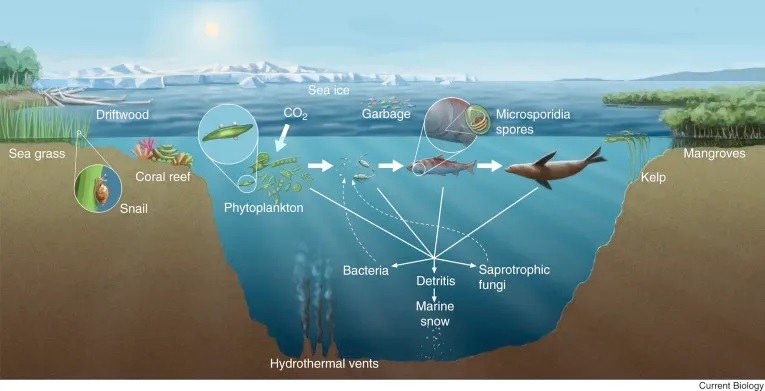"Marine Fungi Primer" Springs from Moore Foundation Workshop at MBL

Spotlight on the little-studied but widespread marine fungi! The Moore Foundation sponsored a workshop at MBL on the topic, resulting in two recent papers in Current Biology, including this "Marine Fungi Primer." MBL Fellow Amy Gladfelter of University of North Carolina, Chapel Hill, organized the workshop.

Although you will not find them on restaurant menus or on the album covers of psychedelic rock bands, marine fungi do exist. In fact, they exist in every marine habitat where researchers have bothered to look: from hydrothermal vents, subsurface deep-sea sediments, and arctic ice, to surface waters, salt marshes and sandy beaches at low tide (Figure 1). Marine fungi are especially adept at living on or inside other living things like algae, corals, sponges and even other fungi. Even primary producers like dinoflagellates and diatoms are commonly infected by marine fungi, a dynamic that might play an important role in global carbon cycles. Although few researchers have tried to quantify their actual biomass, it seems that this can even exceed that of bacteria, particularly in habitats rich in organic carbon. Read more of the article here.
Source: Marine fungi: Current Biology